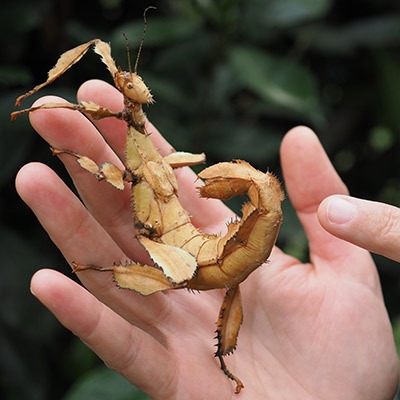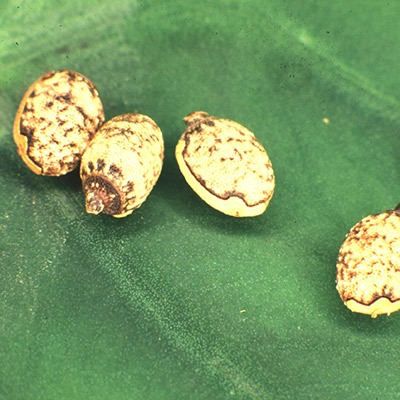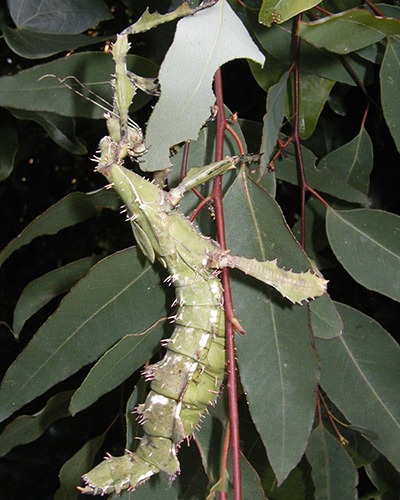Spiny Leaf Insect – Extatosoma tiaratum

Description:
The Spiny Leaf Insect is also known as Macleay’s Spectre or the Giant Prickly Stick Insect. It occurs along the coastal regions of Queensland and extends down into Northern New South Wales. They come in all sorts of colours, from light brown to dark reddish brown, and different shades of green. The body is around 15cm long and is covered in sharp spines and flattened edges (called flanges), making this insect very leaf-like in appearance. The female does not have two pairs of wings like most stick insects – instead she has a single pair of tiny wing flaps and cannot fly at all. The males have two pairs of wings and can fly quite well.
Life Cycle:
The females are much bigger than the males and have huge fat abdomens full of eggs. The males are very slender and are strong fliers.
The eggs laid by the female drop down into the leaf litter, where they have a very interesting start to life. The eggs are often mistaken as seeds and foraging ants will carry them down into their ant nest and store them as food. This isn’t actually as bad as it sounds – an ant’s nest is warm and dry and a good place to protect yourself from predators. In fact the eggs have a tasty little fleshy bit on the end (which ants find irresistible) to actually encourage the ants to pick them up!
When the tiny nymphs hatch out of their egg they pretend to be ants by looking, moving and even smelling like them! This fools the real ants into thinking that our spiny leaf insect is just another member of the colony wandering around the nest, which gives the nymph enough time to escape to the surface. Once it is out of the nest, the spiny leaf nymph climbs up into a gum tree and starts feeding.
Favourite foods:
Spiny Leaf insects are usually found on Eucalyptus (Gum trees) but are also known to eat Oak, Bramble, Hawthorn and even Raspberry and Rose bushes.


Defence tactics:
Spiny Leaf Insects are masters of mimicry. With their sharp spines, large flanges and flattened legs, they truly look like crumpled old leaves – not very appealing to a hungry predator. They will also often use their sharp spiny legs to lash out at attackers if they are caught. But they have another remarkable defence tactic to use in case their camouflage fails them. When disturbed, the Spiny Leaf Insect curls its abdomen up over its head – looking just like a scorpion with a long stinging tail! Predators will rarely attack a scorpion for fear of being stung and will usually back off straight away. Tricky little insects aren’t they?
Fascinating Facts:
- The Spiny Leaf Insect isn’t a true leaf insect – just a stick insect that looks more like a leaf than a stick. True leaf insects belong to the family Phylliidae, of which there are only around 30 known species worldwide. True leaf insects are very broad and flat and extremely hard to find. In Australia they seem to be mainly found around Cape York and Far North Queensland. Most other stick insects (including the spiny leaf insect) belong to the much larger family Phasmatidae that contains around 750 different species worldwide.
